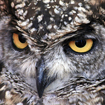TP 8
Elementary level
Description
Materials
Main Aims
-
To provide gist, scan and detailed reading practice using a text about "the world around us" in the context of "amazing animal facts" .
Subsidiary Aims
-
To provide fluency speaking practice in a mingling in the context of guessing animals and the animal facts
Procedure (34-45 minutes)
I'll start my lesson with showing the students two pictures of a "cheetah" and a "dog". they talk in pairs about what they know about these two animals. then, Ss will share their ideas to the whole class, the teacher will elicit the information and direct them to the facts. T will use these ccqs where do cheetahs live? Asia , Africa, the Antarctic and the Arctic ( pre-teach these words) can dogs see colors? (yes/no) which colors can't they see? ( green and red)
Ss look at the pictures and answer to these two questions. Ss talk in pairs. which of the animals in the pictures do you know? where do they come from? which animals attack or kill humans? T will ask for their ideas. ccqs: are they dangerous? (yes) icqs: how many questions? (two) talk or write? (talk) in pairs or alone? ( in pairs)
I'll give the students a hand out text "amazing facts about the world around us" ask them to read it, and they got 3 minutes to do so. I want them to match the pictures with the animals in each fact. they should do it first individually and then check their answers in pairs. after that, T will give feedback. ICQs: read or write? ( read) then(gesture) : match in pairs or alone? (alone) (gesture) how many extras? ( four)
I'll ask them to work in pairs and every one choose one fact that he/she think it's false. they are going to tell each other which fact it is, and tell the reason why they think so. Then I'll demo with one of the students. Then I'll ask ICQ: how many facts? (ten) how many false? (one) The false fact is: " wolves attack and kill more than twenty people every year"
first they talk about the amazing fact together. T will ask to talk about their partner's ideas. T will prepare some other facts about other animals. Each students will pick one fact and read it by themselves. they shouldn't show it to others. they will mingle together and talk about the fact that they have. they can guess which animal it is. T model one. they can live without food for a long time. they are big. they attack people. they have sharp teeth. guess(crocodiles) ICQs: will you show the fact to each other ? (no) can you explain more? (yes) can you make its sound? (yes)

